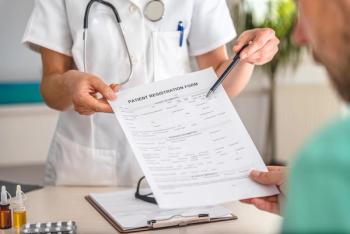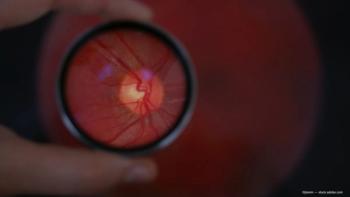
Q&A: A VERONA trial update with Yasha S. Modi, MD
Key Takeaways
- The VERONA study showed EYP-1901's stability in visual acuity and anatomy, supporting progression to a phase 3 trial with potential 6-month redosing.
- EYP-1901, a tyrosine kinase inhibitor, offers a novel mechanism by blocking VEGF receptors intracellularly, potentially providing more durable efficacy for DME treatment.
Yasha S. Modi, MD, discusses promising results from the VERONA study on EYP-1901, a potential treatment for diabetic macular edema.
Yasha S. Modi, MD, an associate professor of ophthalmology at NYU Langone in New York City spoke with Ophthalmology Times at the 2025 American Society of Retina Specialists (ASRS) meeting, which is being held in Long Beach, California from July 30 through August 2, 2025. At this event, he gave a presentation titled, "VERONA: End-of-study results from a phase 2 trial of EYP-1901 (vorolanib intravitreal insert) vs aflibercept for diabetic macular edema."
In this conversation, Modi shared notes on the VERONA study, a phase 2 clinical trial evaluating EYP-1901 (EyePoint Pharmaceuticals), a tyrosine kinase inhibitor (TKI) as a potential treatment for diabetic macular edema (DME).
Note: The following conversation has been lightly edited for clarity.
Ophthalmology Times: You are presenting on the end of study results for VERONA. Can you summarize a few key highlights from that presentation?
Yasha S. Modi, MD: So this is an exciting time for the TKI program, where we have the VERONA study, which concluded the phase 2 study, looking at both 2 different doses of EYP-1901, compared to the control arm of aflibercept. What they demonstrated was incredible stability, both in visual acuity as well as an anatomy going out to week 24, and this sort of lays the groundwork for a progression to a phase 3 study with potentially every 6-month redosing.
OT: Can you share what makes TKIs, and this particular TKI candidate, EYP-1901, a important potential treatment for DME?
Modi: TKIs are a really fascinating addition to the armamentarian of retina specialists, potentially, in the future. The way that these work is that they block VEGF receptors intracellularly, so a slightly different mechanism of action, a pan-VEGF reduction. What we can have is potentially a more durable efficacy out to about 6 months. Now, there's a couple of competitive programs here, and that actually is really great for retina specialists to have this sort of opportunity to potentially use different medications in the near future.
OT: You mentioned that this will be moving on to a phase 3 study. Can you share any details about what that might look like?
Modi: So the details for the phase 3 study have not been released. It does appear that they will be moving forward with the high dose 2.7 milligram EYP-1901 arm, and that's predicated on the superior results just looking at the anatomy and visual acuity of that arm relative to the lower strength arms.
OT: Can you speak at all to this being a implant solution, and how that benefits patients?
Modi: So the beauty of this device is that it is placed in the office through a 22 gauge needle, and it is a bioerodible device, meaning we can continue to administer this medication. We won't have a plethora of pellets in the eye several years later. I think this is something that will fit in very, very nicely to the current workflow of retina specialists.
Newsletter
Don’t miss out—get Ophthalmology Times updates on the latest clinical advancements and expert interviews, straight to your inbox.









































